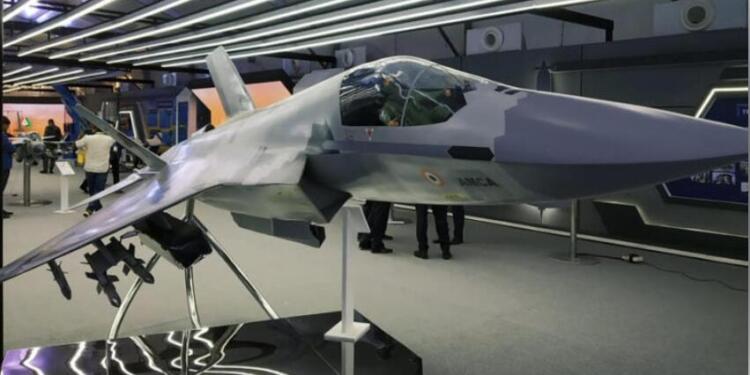India is poised to make a significant leap in its defense capabilities with the upcoming Advanced Medium Combat Aircraft (AMCA), a 5.5-generation fighter jet slated for prototype unveiling by 2028. This ambitious initiative highlights the Indian Air Force’s (IAF) commitment to advancing domestic military technology.
The AMCA, with a weight of 27 tons, will be India’s first stealth fighter, incorporating advanced avionics, stealth features, and enhanced combat systems. The Defence Research and Development Organisation (DRDO) is leading this pioneering project, which aims to place India at the forefront of next-generation fighter aircraft development.
DRDO is actively seeking partners for development and production to collaborate on this high-profile venture. The project’s progress has been reviewed in a high-level meeting between the IAF and DRDO, focusing on the AMCA and other aircraft development programs.
The AMCA is part of a comprehensive strategy to enhance India’s air combat capabilities, with the aircraft expected to enter production by 2035. This timeline reflects India’s long-term vision for defense modernization and technological advancement.
Meanwhile, India’s indigenous fighter aircraft projects are advancing as planned. The TEJAS MK-2, an upgraded version of the existing TEJAS fighter, is scheduled for its maiden flight in March 2026. Developed by the Aeronautical Development Agency (ADA) and Hindustan Aeronautics Limited (HAL), the TEJAS MK-2 will feature improved weaponry and sensors. Mass production of this enhanced variant is projected to begin by mid-2029.
Additionally, the TEJAS MK-1A is set for deployment at the Nal airbase in Bikaner, Rajasthan, a strategic location near the Pakistan border. The first squadron of these aircraft will be stationed there, bolstering defense capabilities along India’s western frontier. With 83 units already ordered and a total of 180 planned, the TEJAS MK-1A represents a significant step in strengthening India’s defense posture.
India’s focus on advancing its air force with these state-of-the-art aircraft underscores a commitment to self-reliance and national security, ushering in a new era of indigenous defense technology.































